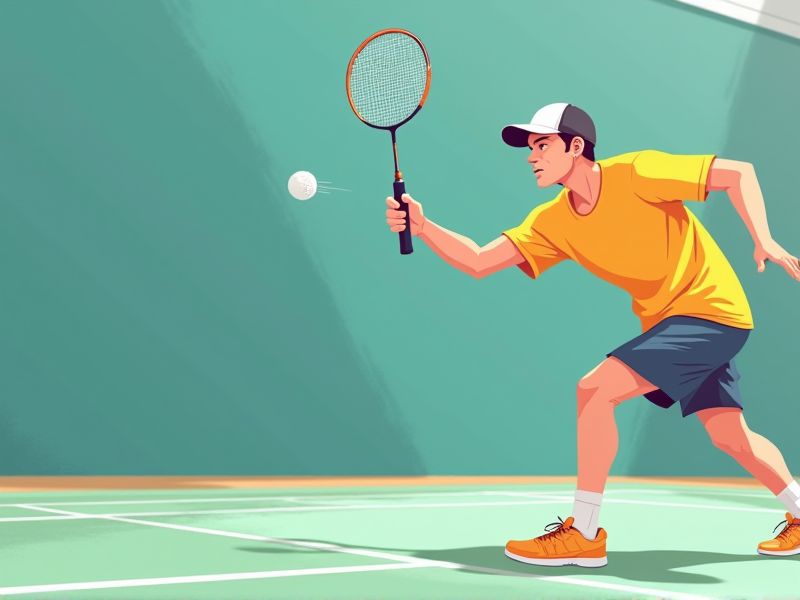
Viktor Axelsen emphasizes the importance of taking responsibility for one's own training to improve at badminton, highlighting the need to set specific goals and focus on areas that require improvement. This approach allows players to optimize their practice sessions, even with limited time, by concentrating on skills like footwork and adapting to opponents in real-time. Erland Kops, a legendary badminton player, underscores the importance of focus during matches, noting that when playing, there are only two people in the world: himself and his opponent. By combining these strategies, players can enhance their performance and achieve better results in the game.
How to Be Better at Badminton
Optimize footwork and court positioning.
Improving footwork leads to quicker changes in direction and better coverage of the court. Regularly practicing drills that emphasize shuffling, lunging, and quick recovery positions develops speed and precision. Focusing on optimal court positioning ensures you're always strategically placed to counter your opponent's shots. Integrating these techniques into your routine can dramatically enhance your overall performance and consistency on the court.
Refine grip and racket control.
Refining your grip and racket control is essential to maximize precision and power during every shot. Experiment with slight variations in grip pressure and hand positioning based on the shot type to enhance reaction time and control. Consistent practice with drills targeting grip adjustments builds muscle memory, which directly improves stroke accuracy. Integrate feedback during matches and training sessions to pinpoint any deviations in your technique and fine-tune your control further.
Perfect stroke technique.
Developing a perfect stroke technique starts by establishing the correct grip and stance, which directly improves stroke consistency and power. Focusing on biomechanics--such as the timing of your swing and the optimal follow-through--results in enhanced accuracy and reduced injury risk. Regular drilling of arm and core movements reinforces proper muscle memory, ensuring every stroke is efficient under competitive pressure. Utilizing video reviews and expert feedback enables you to adjust mechanics quantitatively, leading to measurable performance improvements.
Enhance agility and speed.
Improving your badminton performance starts with regular agility ladder drills that enhance footwork and lateral quickness. Incorporating sprint intervals and plyometric exercises boosts overall cardiovascular conditioning and explosive speed. Studies indicate that targeted speed training directly correlates with enhanced on-court performance, reducing reaction time during fast-paced rallies. Combining these physical training elements with focused technical drills results in a measurable improvement in both agility and speed, boosting overall effectiveness in match situations.
Master serve and return.
Mastering your serve builds immediate control over the rally, allowing you to set up your offensive strategy right from the start. A powerful serve pressures your opponent, forcing them into a defensive position that can lead to errors. By refining your return technique, you neutralize aggressive serves and transform defensive plays into counter-attacks. Consistent practice in serve and return drills has been shown to improve match performance by enhancing both precision and reaction speed.
Develop net play precision.
Focus on refining your footwork to consistently position yourself for precise net play. Practice delicate net shots with controlled racket movements to build muscle memory and enhanced hand-eye coordination. Emphasize drills that simulate real-match pressure, allowing you to adjust rapidly while maintaining accuracy near the net. This targeted approach forces opponents into difficult returns, directly elevating your overall competitive performance.
Boost endurance and strength.
Integrate interval training such as sprint drills or cycling to elevate your cardiovascular endurance, which is essential for enduring long rallies. Develop core and leg strength through exercises like squats and planks to enhance stability and power during movement. Incorporate sport-specific drills that mimic the quick directional changes in badminton to improve agility and reaction time. Combining consistent endurance exercises with targeted strength routines will boost overall performance and reduce injury risk on the court.
Implement tactical game strategies.
Analyze your opponents' patterns and adjust your positioning based on empirical match data to exploit their weaknesses. Integrate focused drills that replicate real-game scenarios, ensuring each session reinforces specific tactical moves. Regularly review match footage and performance metrics to refine your shot placements and overall court strategy. Consistently adapting your game plan according to detailed feedback boosts your decision-making speed and contributes to a measurable improvement in your badminton performance.
Cultivate mental focus and resilience.
Improve your on-court performance by regularly practicing mindfulness techniques that sharpen your focus during fast-paced rallies. Employ visualization drills before matches to simulate various in-game scenarios, allowing you to swiftly adapt to unexpected shots. Develop mental resilience by embracing setbacks as opportunities to learn rather than failures, strengthening your ability to bounce back after each game. Finally, complement your physical training with cognitive exercises, aligning mental robustness with technical skills and data-backed insights from sports psychology.
Engage in video analysis and feedback.
Recording your badminton sessions and reviewing them critically allows you to visually pinpoint technical errors in strokes and footwork. When you identify these mistakes, the feedback loop enables focused practice that corrects inefficient habits. Data-driven insights from video analysis translate into practical adjustments, improving technique and strategic play. Consistent review and iterative feedback foster a cycle of continuous improvement, directly impacting overall performance on the court.
Summary
Optimizing footwork and court positioning increases your defensive range and sets the stage for swift offensive moves. Refining grip and racket control enhances precision, allowing for quicker adjustments and more dependable shots. Perfecting stroke technique directly boosts power and consistency, enabling efficient execution of smashes, clears, and drop shots. Integrating these improvements creates a strong, well-rounded skill set that provides both tactical and physical advantages on the court.
